Daggers vs Knives vs Swords: Comparing the Differences!
Posted by SwordsSwords on Sep 18th 2023
In the world of bladed weapons, the choice between daggers, knives, and swords is a matter of both function and finesse. These iconic tools have captivated human imagination for centuries, serving as symbols of power, prestige, and practicality. But when selecting the right weapon for your needs, understanding their unique characteristics and applications is essential.
In this blog post, we delve into the distinct attributes of daggers, knives and swords. We will be exploring their historical significance, design variations, and the key features that set them apart from each other.
Daggers vs Knives vs Swords: What’s The Difference?
| Feature | Dagger | Knife | Sword |
| Size | Typically shorter | Varies | Longest |
| Length | 2-8 inches long | Typically 6” or less | A foot or more |
| Blade material | All types of steel | Typically stainless steel | High carbon steel |
| Blade | Single-edge or double edge | Single-edge or double edge | Double edged |
| Use | Stabbing and thrusting | Cutting, slicing, piercing, stabbing | Fighting |
| Portability | Easy to conceal | Varies | Difficult to conceal |
Historical Background of Daggers, Knives and Swords
Daggers

Daggers were among the earliest weapons crafted by humans. The exact date of their creation is challenging to pinpoint precisely, as it predates recorded history.
However, evidence of early dagger-like weapons, often made from materials such as stone or bone, dates back to the Paleolithic period, which began approximately 2.6 million years ago and lasted until around 10,000 years ago.
These early daggers were essential tools for hunting and self-defense and played a vital role in the survival and progress of early human societies.
Knives

Knives, like daggers, have a long history that extends back to prehistoric times. The exact date of their first creation is difficult to determine precisely due to the absence of written records from that era.
However, the earliest evidence of knife-like tools can be traced back to the Oldowan culture, which existed around 2.6 million years ago. These early knives were typically crafted from stone and had simple, rudimentary shapes.
As human technology and craftsmanship advanced, knives evolved, with the transition from stone to metal. They were made from copper and tin.
The Bronze Age, which began around 3300 BCE, saw the production of metal knives, signifying a crucial milestone in the history of knife-making.
Swords
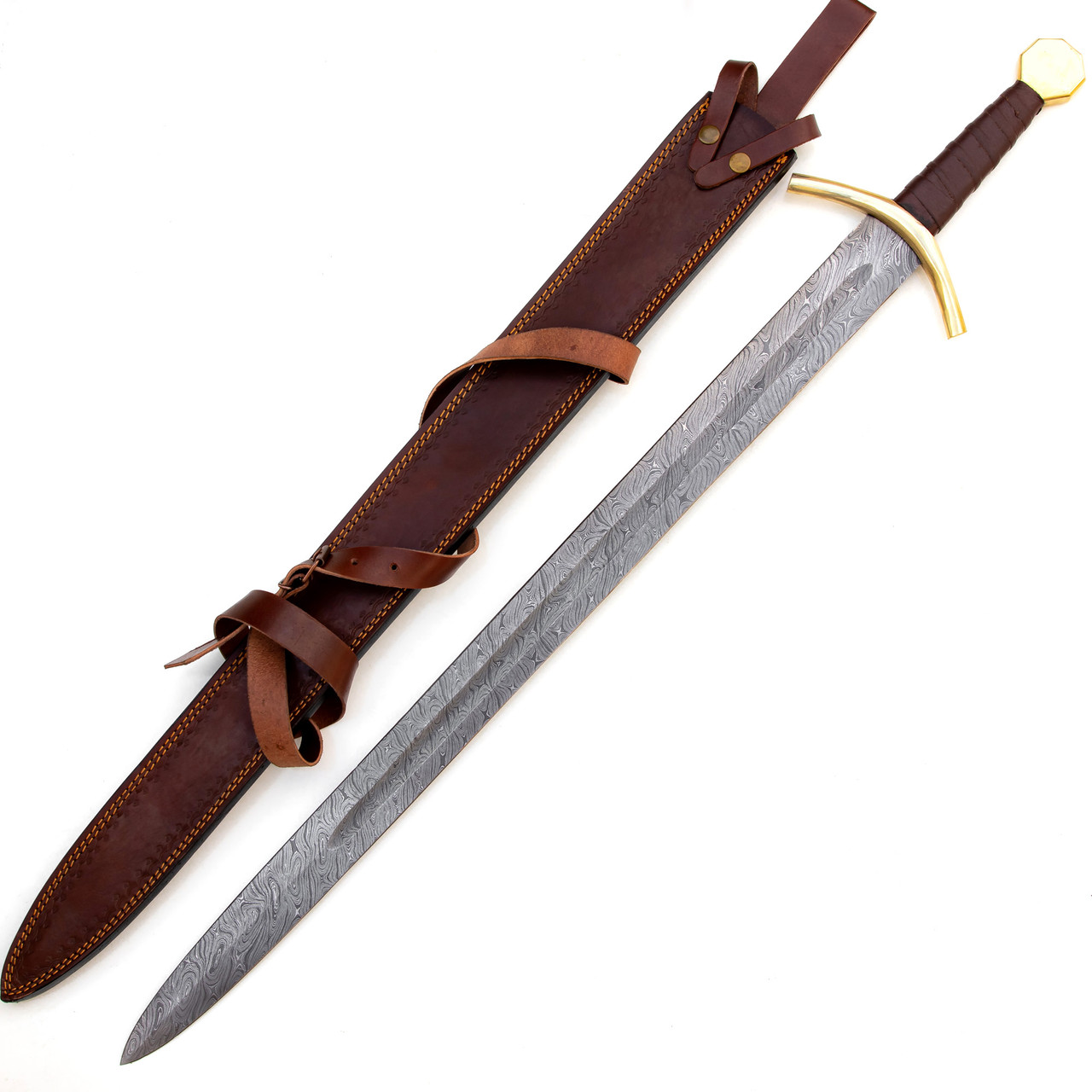
The first swords were developed during the Bronze Age, which began around 3300 BCE and lasted until approximately 1200 BCE.
These early swords were made of Bronze and typically short, with a leaf-shaped or straight blade and a hilt for gripping.
One of the most well-known early bronze swords is the "Naue II" sword, dating to around 1600 BCE, found in what is now modern-day Germany. This type of sword design was prevalent during the late Bronze Age .
Sword-making techniques continued to evolve over time, leading to the development of iron swords during the subsequent Iron Age, which began around 1200 BC. These iron swords were more durable and played a crucial role in shaping the military and cultural history of various civilizations, including those of Europe, Asia, and the Middle East.
The Design Variations of Daggers, Knives, and Swords
Daggers and their types:
Daggers, known for their compactness, feature double-edged blades and are ideal for close combat.
Daggers come in a variety of captivating forms, each with its own distinct appeal.
Traditional Daggers have a historical significance. This makes them sought-after collector's items. Examples include medieval daggers.

Bowie Daggers, characterized by their iconic curved blades and handguards, pay homage to American frontier history.
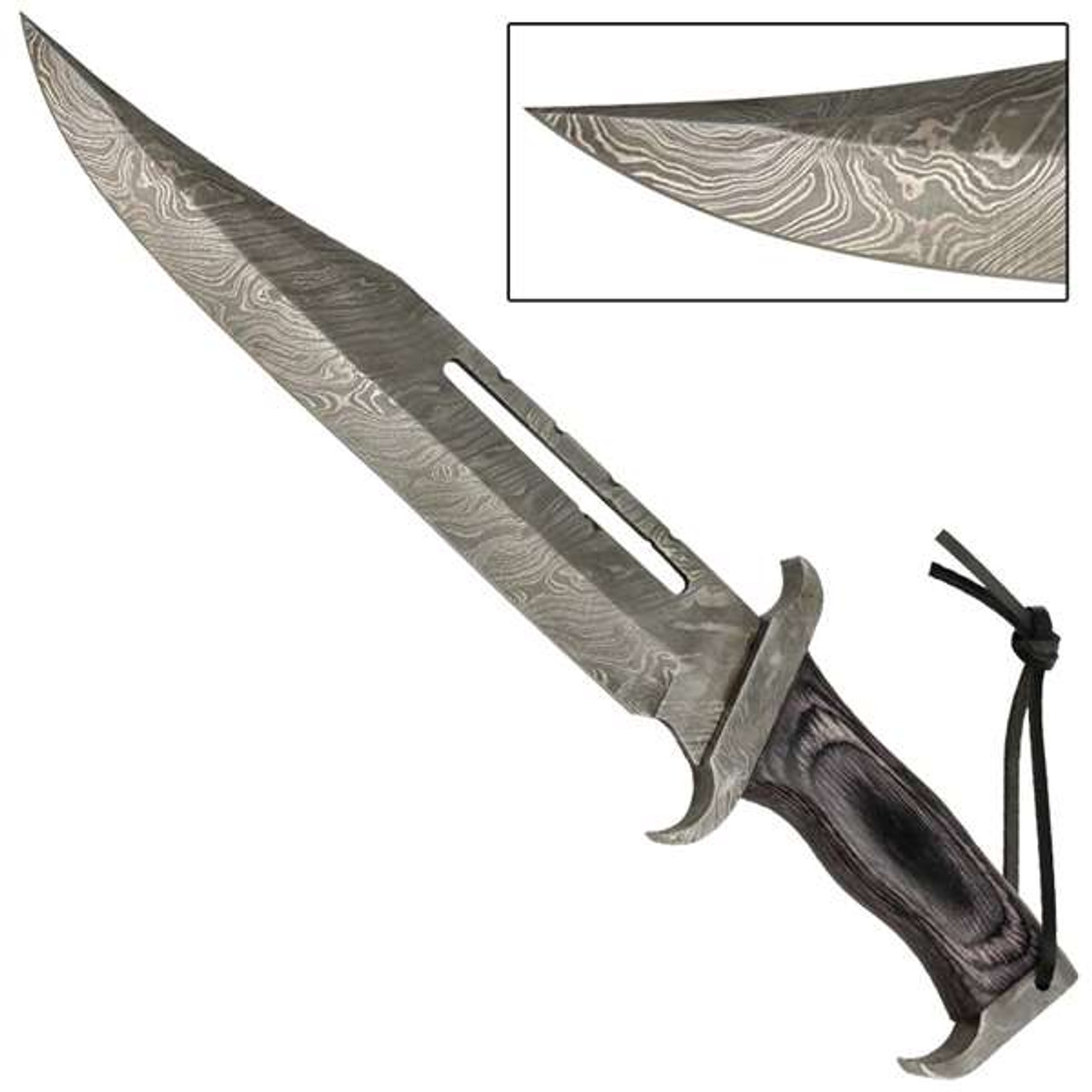
Fantasy Daggers transport enthusiasts to imaginative realms with exaggerated designs inspired by fantasy literature and media.
Tactical Daggers, on the other hand, prioritize functionality and are favored by outdoor enthusiasts and law enforcement officers for their versatility.

Knives and their types:
Like daggers, knives also come in various shapes and designs. Each one is built for a specific purpose:
A pocket knife is a small, folding knife designed for everyday carry. It often features a variety of blade styles, including drop point, clip point, and tanto.

A drop point knife is characterized by a convex curve on the back of the blade that slopes down to meet the point. This design provides a strong, versatile blade with a sharp point, making it suitable for various tasks such as slicing, piercing, and general utility.
Clip point knives feature a concave cutout on the top of the blade, creating a sharp, clipped point. This design is excellent for precision tasks and offers good control, making it popular for hunting and everyday carry.

Tanto knives have a distinct angular blade profile with a sharp, straight-edged front section and a secondary bevel, creating a robust and sturdy tip. Originally designed for armor-piercing in Japan, they are now popular for tactical and self-defense purposes.

Stiletto knives are characterized by their long, slender blades and needle-like points. Historically, they were designed for thrusting and are known for their elegant, Italian-inspired designs.
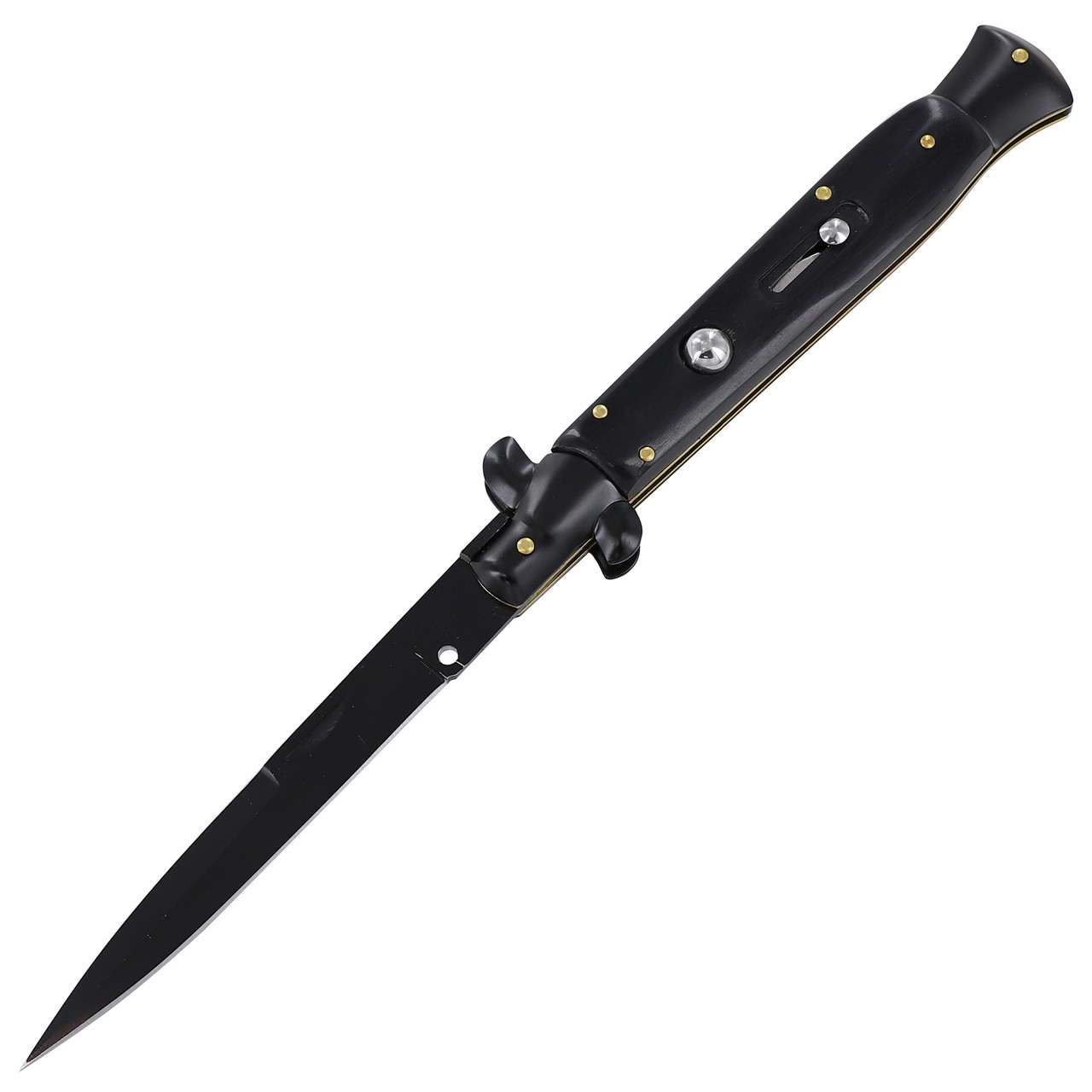
Switchblade knives: Switchblade knives have a spring-loaded mechanism that allows the blade to be deployed quickly with the push of a button or switch. They are often associated with automatic opening and are regulated in many places.

A folding knife is any knife that can be folded to encase the blade within the handle, making it safe and compact for carrying. Many pocket knives and stiletto knives are also folding knives, offering versatility and convenience.
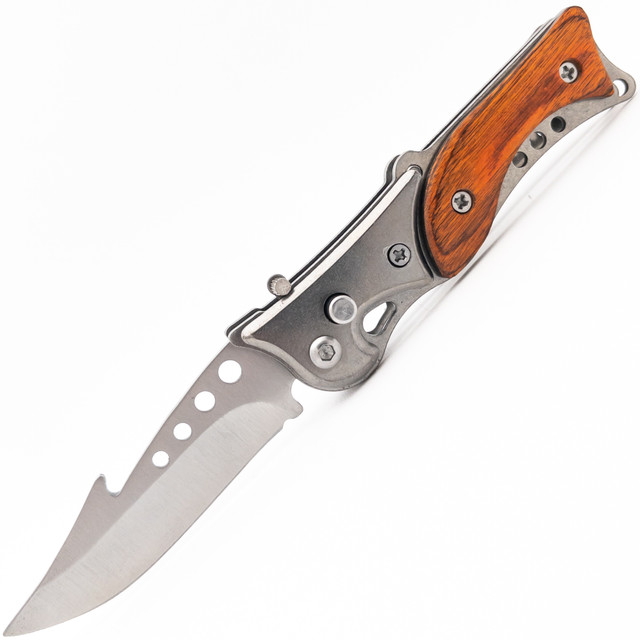
Swords and their types
Swords, with their imposing presence, vary greatly in size and style, from the slender rapier to the broad-bladed Japanese katana sword.
Display Swords are decorative, non-functional replicas of historical and fantasy swords, often used for ornamental purposes like wall mounting or collecting.
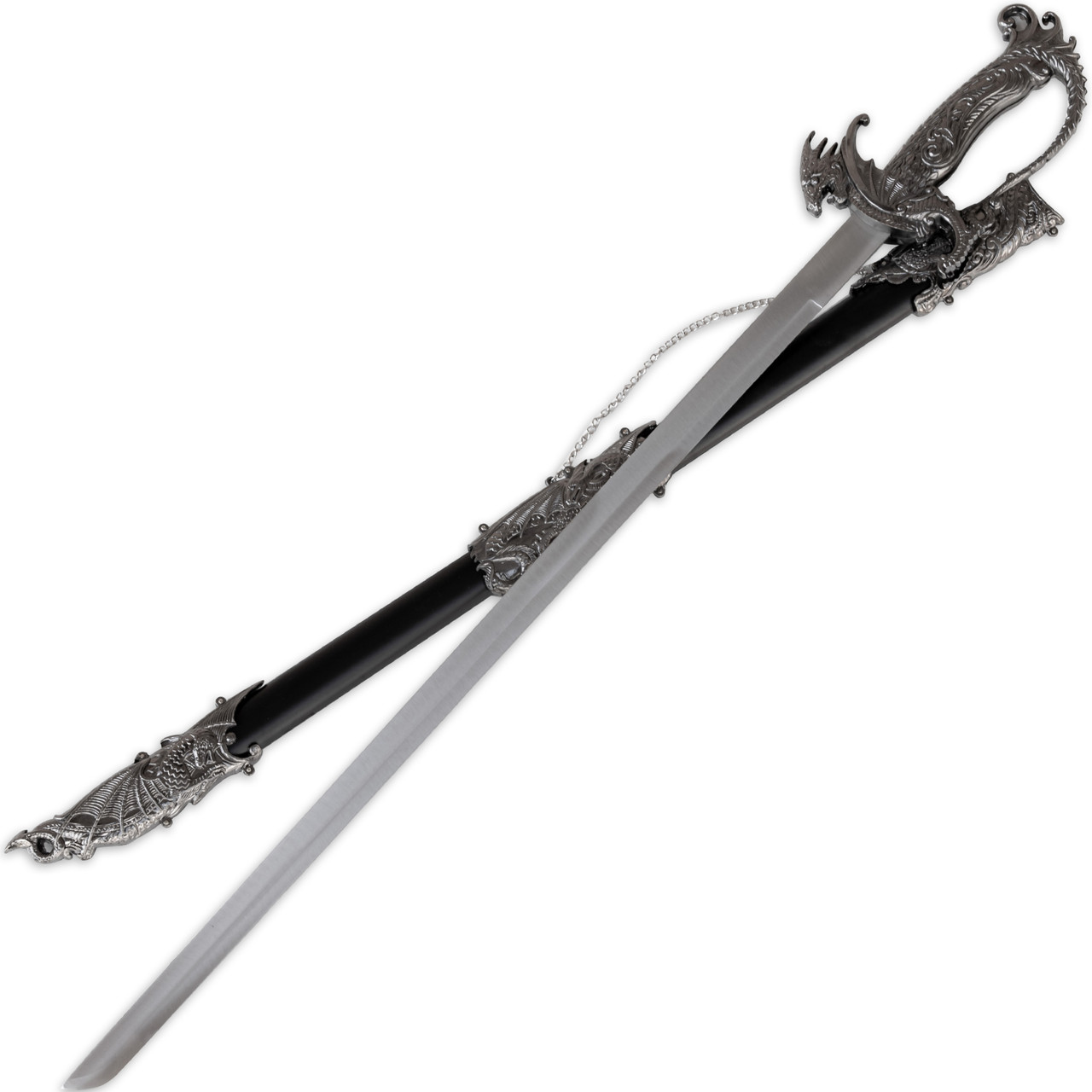
Rapier Swords, originating in 16th century Europe, feature slim blades and complex hilts, famous for their precision and agility in dueling and fencing.

Fantasy Rapier Swords are a fantasy-inspired subset, incorporating imaginative designs from literature, films, games, and other fantasy media.
These swords may not be historically accurate but are highly sought after by fans for their creative aesthetics, making them valuable for collectors and display enthusiasts seeking unique and imaginative pieces.

Anime swords are often seen in Japanese anime and manga. We see them carried by the heroes and villains of these stories.
These swords have exaggerated features, such as oversized blades or elaborate decorations. Some famous anime swords include the katanas of Bleach, the Zanpakuto of Soul Eater, and the Nichirin swords of Demon Slayer.
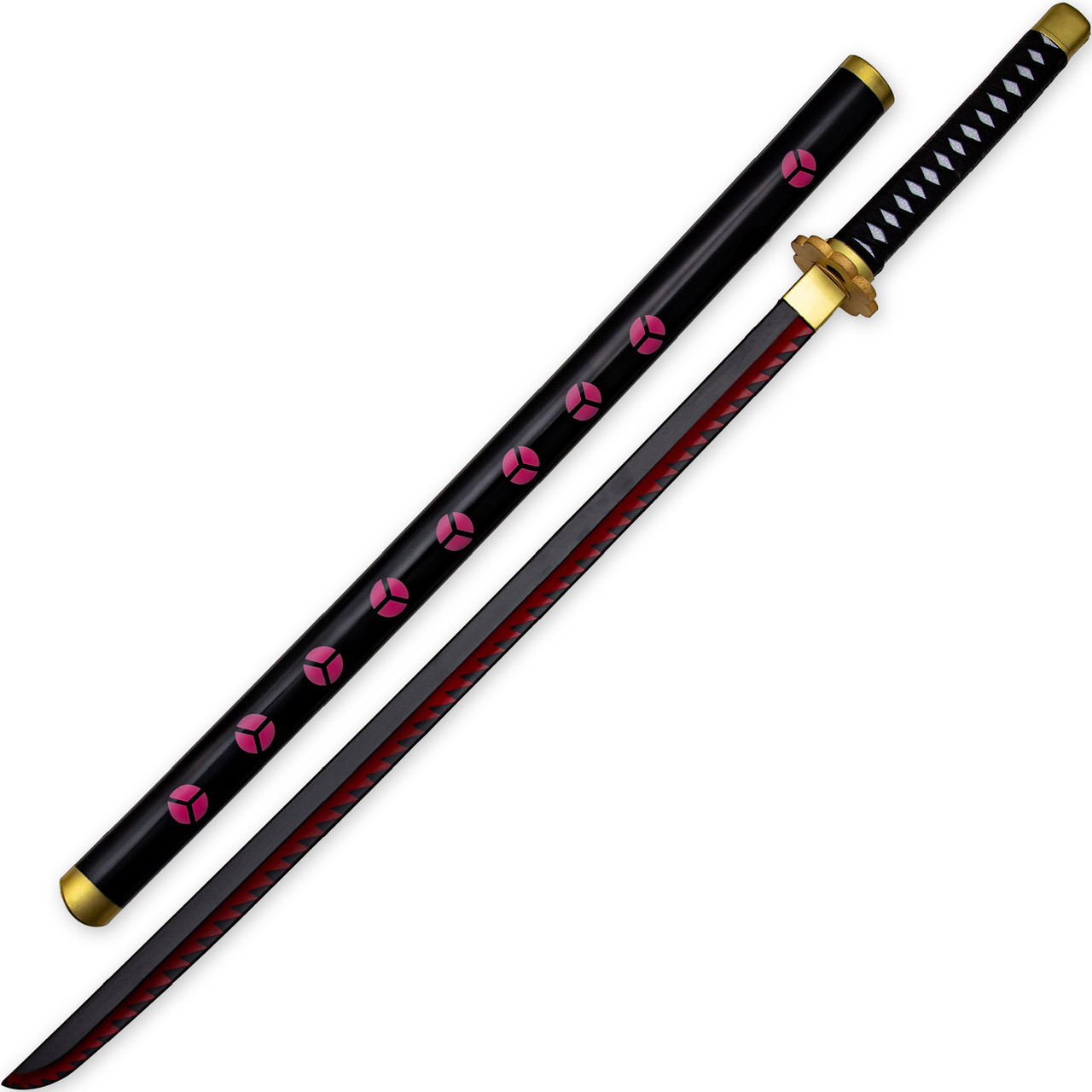
Fantasy swords can be inspired by real-world swords, have magical properties or be made from mythical materials.
They are often seen in fantasy novels, movies and games. Some famous fantasy swords include the One Ring from The Lord of the Rings, Excalibur from Arthurian legend, and the Sword in the Stone from the famous Disney movie.

The Scimitar from the Middle East or the Longsword from Europe are some examples of functional swords . They are used for combat and made from materials that are durable and strong.

Material
Knives: These are often made from carbon steel, stainless steel, or Damascus steel. Carbon steel is a good all-around material for knife blades, as it is relatively inexpensive, easy to sharpen, and holds an edge well.
However, it can be prone to rust if not properly cared for. Stainless steel is more resistant to rust than carbon steel, but it is also more difficult to sharpen.
Damascus steel is made by layering different types of steel together. This process creates a blade that is strong, durable, and has a distinctive wavy pattern.
Swords: Swords are typically made from high-carbon steel. High-carbon steel is very strong and durable. Stainless steel is too brittle for a sword. If it is used to make a longsword, it will break.
Daggers: Daggers are often made from the same materials as knives, but they can also be made from other materials, such as bronze or obsidian.
Bronze is an ancient metal that was used to make daggers in many cultures. It is not as strong as steel, but it is easier to work with and can be made into very sharp blades. Obsidian is a type of volcanic glass that can be used to make very sharp blades. It is not as strong as steel, but it is very sharp and can be used to cut through tough materials.
Handle
● Daggers typically have short handles that are made from wood, metal, or plastic. The handle is designed to be comfortable to grip and to prevent the dagger from slipping out of the hand.
● Knives can have a variety of handle materials and designs, depending on the intended use of the knife. Kitchen knives often have wooden handles, while hunting knives may have metal or plastic handles. Some knives, such as folding knives, may have a folding handle that allows the blade to be concealed.
● Swords: Swords typically have long handles that are made from wood, metal, or leather. The handle is designed to provide a secure grip and to balance the weight of the sword. Some swords, such as rapiers, may have a hilt that protects the hand from injury.
Sharpness
The sharpness of a blade is affected by the method used to sharpen it.
A blade that is sharpened by hand will typically be better than a blade that is sharpened by machine. This is because hand-sharpening allows for more control over the angle and smoothness of the edge.
● Daggers: Daggers are typically made from thin, high-carbon steel blades that can be sharpened to a very fine edge. This makes them ideal for stabbing and piercing, as the sharp blade can easily penetrate flesh and bone.
● Knives: The sharpness of a knife will depend on the material, the method of sharpening, and the use of the knife. For example, a kitchen knife that is used for cutting vegetables does not need to be as sharp as a hunting knife that is used for skinning game.
● Swords: Swords are typically made from high-carbon steel blades that are sharpened to a somewhat coarser edge than daggers. This is because swords are often used for slashing and cutting, and a coarser edge is more durable and can withstand the forces of impact.
The skill of the user also plays a role in the sharpness of the blade. A skilled user will be able to use a dull blade more effectively than an unskilled user. This is because a skilled user will know how to apply the correct amount of pressure and angle to the blade to get the desired result.
Whether you're looking for a high quality sword, knife or dagger for sale, Swordsswords.com will be your ultimate go-to destination. We'll help you find the perfect knife, sword or dagger to make your collection complete.



